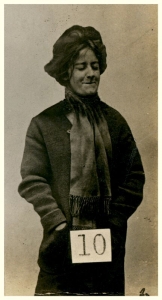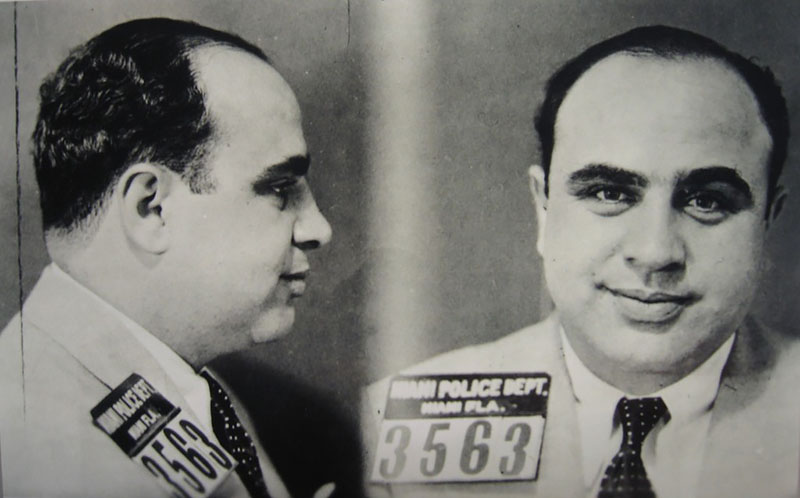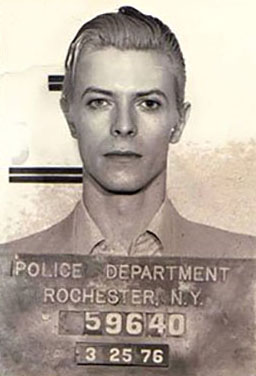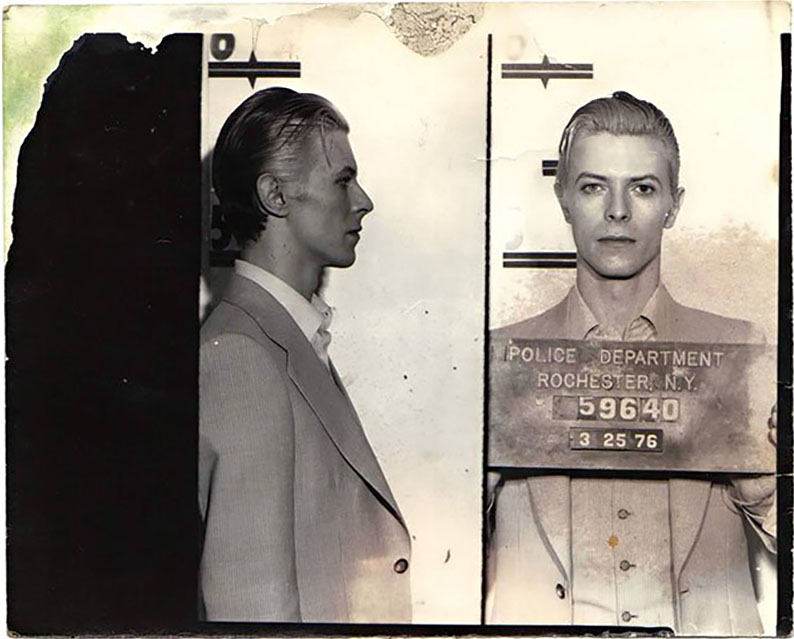There is definitely something morbid about our fascination with police mugshots – the outcome of what is easily the most uncomfortable of all portrait sessions. One can’t resist to look at these pictures taken for identification purposes by law enforcement (usually two views of someone’s face, front and profile) when someone is arrested. This attraction runs wild especially when mugshots portray celebrities – have you seen those of Tiger Woods recently, haven’t you?
Let’s face it – I am also fascinated by them: that’s for the same voyeuristic drive we all share, plus I am genuinely attracted by their being “forced portraits”.
Mugshots are portraits you can’t refuse to pose for: “The police have the right to take photographs of you. […] They don’t need your permission to do this.”

When suffragette Evelyn Manesta tried to say no to such request, in 1914, she was even physically forced to pose, with one police officer holding her head in position, “in order to get a better view of her features – and she seems to be trying to make that as hard as possible by closing her eyes and tensing her mouth.” The mugshot was then doctored in the darkroom by removing the arm of her guardian (and it’s now part of the Photograph Collection at the National Portrait Gallery in London).
A search on any major photo library results in fascinating (re-)discoveries: the evolution of Lindsay Lohan throughout her unintentional career as a mugshot sitter; OJ Simpson’s image that stirred much controversy as it was manipulated by Time magazine back in 1994; the defiant Steve McQueen and the sheepish Hugh Grant; and the list could go on and on.

I have to admit that I am always amazed when observing mugshots of the Chicago gangster Al Capone. He did look like a truly respectable businessman – even tilting his head forward like a consummate Hollywood actor when posing for the police in the Thirties. Having a mugshot taken is not necessarily a traumatic experience after all, if one is used to it.
Not everyone knows that the first standardised mugshot was in fact a… self-portrait.
![Fiche anthropométrique [anthropometric data sheet] de M. Alphonse Bertillon • Service Regional d’Identité Judiciaire, Préfecture de Police, Paris](https://www.rinopucci.com/wp-content/uploads/2017/08/Bertillon_fiche_anthropometrique.jpg)
Cameras started being pointed at criminals in the 1840s, as soon as photography was invented, but it was only in 1888 that French police officer Alphonse Bertillon standardised the process of featuring full face and profile views with consistent light and angle – so the first mugshot he took was of himself, in order to get his own device tested.
Since then, the obvious statement that a mugshot “is not a guilty verdict” has been repeated again and again like a mantra. Courts in the US have long recognised that the mugshot photographs can have a prejudicial impact on trails. “The double-shot picture, with front and profile shots alongside each other, is so familiar, from ‘wanted’ posters in the post office, motion pictures and television, that the inference that the person involved has a criminal record, or has at least been in trouble with the police, is natural, perhaps automatic” – this principle, stated in a decision taken in 1966, is still largely quoted.
So publishing mugshots still swings between being a public service (a mugshot released on TV can help the general public spot criminals on the run) and being an increasingly sordid industry (where money is made coming and going: publishing the mugshots first, and then charging the people exposed to public scorn to take the pictures down).
One might disagree with the business model of publications such as “Caught Up”, a weekly paper distribuited in Tennessee that features the mugshots of everyone that has been arrested, but one can’t deny that the statement printed under its masthead has been cleverly put:
Please do not contact us requesting that your picture be left out of the paper. It’s your job to keep out of the paper, not ours.
If you want to have your own mugshot but without the hassle of being arrested, there are websites out there that can help you with that. As the mugshot photography, like any other photo genres, has its own clichés, it’s recommended to look “bored, half-asleep, embarrassed, a little angry, drunk, confused, or make a weird face”.
Well, unless you are the Thin White Duke…

The most iconic mugshot of all times (it’s even printed on t-shirts available on Amazon) is without any doubt the one taken of David Bowie by the police department after his arrest for possession of marijuana in Rochester, NY, in 1976: the portrait was adventurously found in 2007 and then sold on eBay for more than $2,700.
Lucy Mangan in The Guardian described Bowie’s expression as:
an unflappable level gaze that admits nothing, but with the hint of a smile that suggests all sorts of ongoing exotically depraved activities whose existence the authorities do not even suspect.
When Bowie died, his admirers ecstatically tweeted: “You may be cool. But you will NEVER be 1976 David Bowie mugshot cool.” The truth has to be told here: Bowie’s mugshot was not taken in the immediate aftermath of his arrest, but three days later, when the performer appeared at City Court for arraignment. It’s like a relaxed Bowie was going to one of the portrait sessions he was quite used to attend – no matter who, on that morning, was about to press the shutter.

